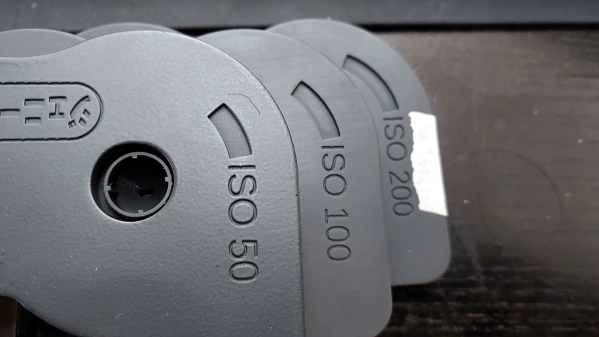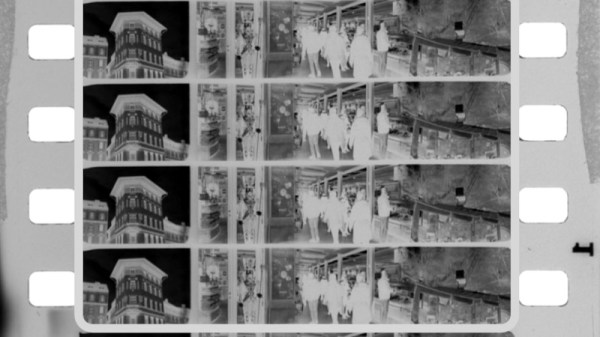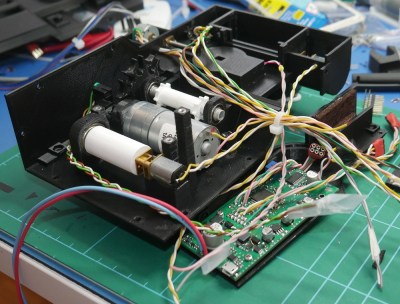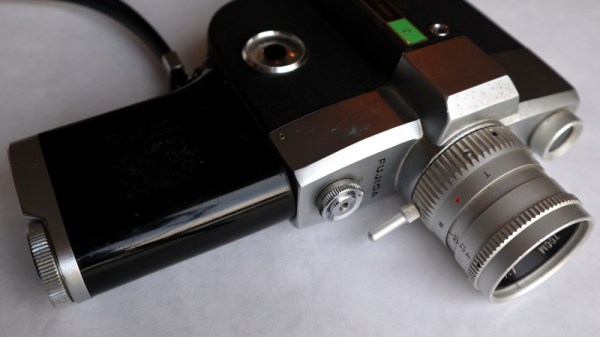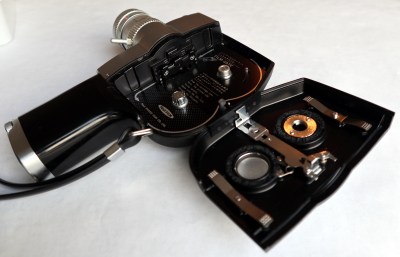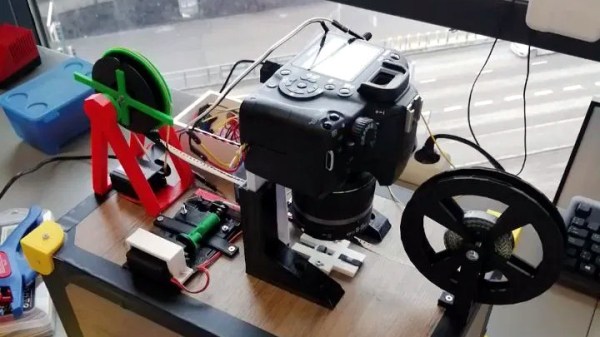There’s a pleasing retro analogue experience to shooting Super 8 film, giving as it does the feel of a 1970s home movie to your work. But once you’ve had the film developed, there’s a need for a projector to enjoy the result. Far better to digitize it for a more modern viewing and editing experience. [Elbert] has made a digitizer for 8mm film which takes the best approach, snapping each frame individually to be joined together in a video file as a whole.
The frame of the device is 3D printed, but some parts of a film transport must be higher quality than a printed part can deliver. These, in particular the sprockets, are salvaged from a film viewer, and the movement is powered by a set of stepper motors. The steppers are controlled by an ESP32, and the optics are provided by a USB microscope. All this is hooked up to a PC which grabs each image, and finally stitches them all together using ffmpeg.
As anyone who has dabbled in 8mm film will tell you, there is a lot in the quality of a film digitizer, and it’s often worth paying for a professional job from someone aimed at the film-making world rather than you local photographic print booth. It would be interesting to take a look at this device, and see whether its quality is worth pursuing. After all, some of us have been known to dabble in 8mm film.


